24 F. average high on February 7.
38 F. high on February 7, 2016.
February 8, 1996: Showers and thunderstorms bring a mix of freezing rain and rain across the eastern portion of Minnesota. In Edina, lightning damaged a house.
February 8, 1933: Arctic air remains entrenched across Minnesota with a morning low of -55 at Warroad.
More Ice Than Snow This Winter - What's Going On?
The first couple of ice storms were fun - now it's getting to be a colossal pain in the (Doppler).
AerisWeather meteorologist and resident statistician D.J. Kayser counts 15 days since December 1 with either rain or freezing rain (glaze ice). 22 days since November 1.
Between extended thaws and rain mucking up the snow, no wonder skiers, skaters and snowmobile enthusiasts are in a dark funk.
I thought we were in a weak La Nina cooling phase of the Pacific. Months ago the official NOAA forecast called for a colder than average winter. Uh huh. The latest outlook calls for a weak El Nino warm phase returning by spring.
Speaking of warming ECMWF (European) model data now has the MSP metro above 40F from Friday thru most of next week; temperatures that would feel right at home in late March. Mud season may come early in 2017.
In the meantime a fleeting spasm of winter keeps highs in the low teens today; a morning wind chill of -10F at the bus stop. No significant snow (or ice) is in sight, just a touch of spring next week. Within 8-9 days highs approach 50F.
Peoria - with lakes!
Photo credit: Pete Schenck. Lake Ossawinnamakee.
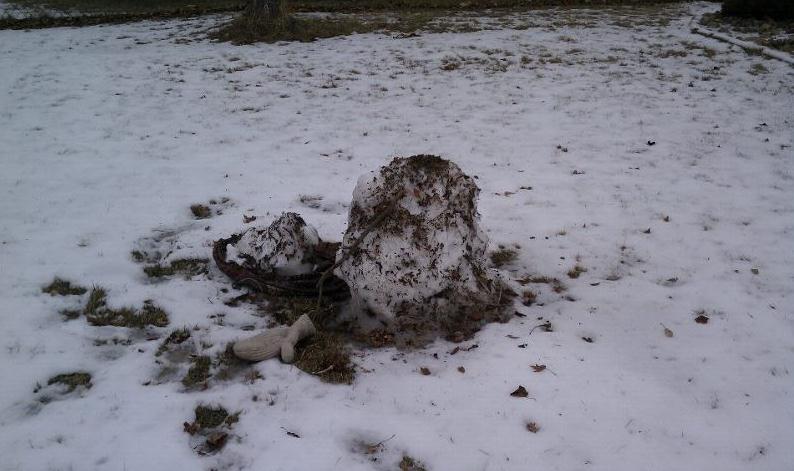
Winter On Life Support. Now this is more like it! Winter the way I knew it could be, a bright, shiny Canadian slap! Make the most of this precious lack of kinetic energy because more relative warmth is on the way; 40s by Friday, in fact the mercury trends above average most of the next 1-2 weeks. Just enough time to run (OK - slide) outside and make an ice-man in the front yard. Not nearly as attractive as a snowman but we're in a snow depression, man. Don't you read the papers?
Photo credit: Tony Perkins.

Yes Northeast: That's "Snow". It's been a quiet, unseasonably mild winter for much of the eastern USA, but that innocent tranquility will be shattered tonight into Thursday as a fast-moving storm pushes a burst of snow across Pennsylvania and New Jersey into New England. A swath of 5-8" seems imminent. 12 KM NAM total snowfall product: NOAA and Tropicaltidbits.com.
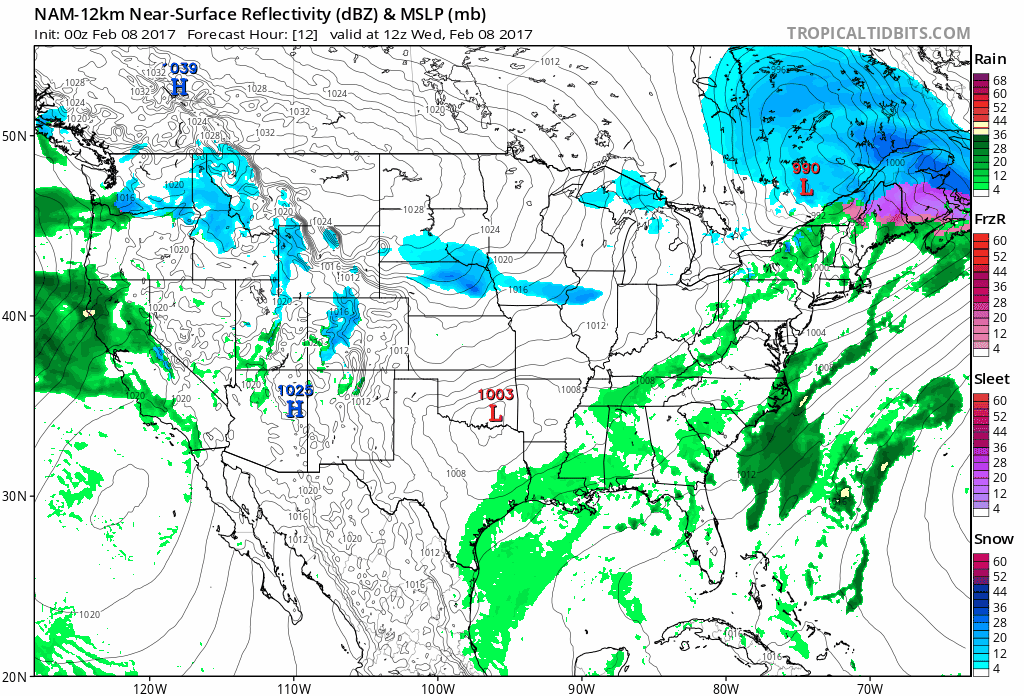
Stormy Bookends. An innocent-looking area of low pressure pushing across Kentucky blows up tonight as it moves into the Virginias, then right up the coast, fortified with Atlantic moisture to produce a very plowable snowfall for much of the northeast. Meanwhile the next fire hose of Pacific moisture sloshes ashore today with more heavy rain, mudslides, road closures and heavy mountain snows. This winter, when in doubt out west, just predict wet. Odds are you'll be right.
Weak El Nino by Spring? For months I've been telling you how the pattern resembles an El Nino warming phase, especially the parade of damaging storms for the west coast and a bias toward warmth, nationwide. Now NOAA NCEP is predicting the onset of a "weak El Nino" for the Northern Hemisphere by spring. Go figure.
February Looks To Be Warm, And Not Because a Groundhog Said So. Marshall Shepherd explains at Forbes: "...Weather forecasts, like seasonal prediction models, try to predict the state of the atmosphere by solving complex hydrodynamic equations. However, weather models try to predict the exact "state" of the atmosphere or "weather" at specific date and time. However, the limits of the initial atmospheric states, observations, boundary conditions and assumptions about the evolving atmosphere limit accuracy to about 10 to 14 days. Seasonal forecasts cannot predict the exact daily "weather" at a given location three months in advance but rather try to assess the short-term climate state based on the ENSO (El Nino Southern Oscillation) cycle and other processes that show some level of predictability at monthly, seasonal or annual time scales. Other clues about seasonal predictability have been detected in an "alphabet soup of processes..." (Graphic credit: NOAA).
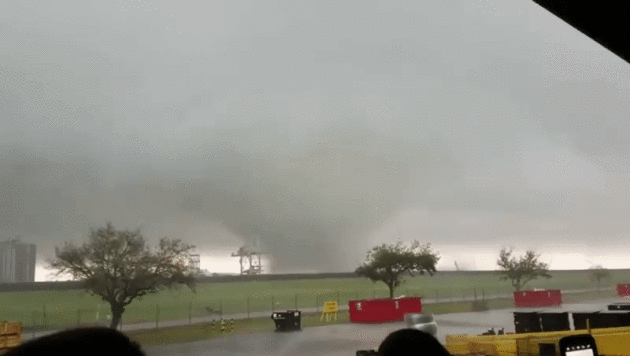
Video credit: NASA.
CNN has more information here.
- Get out. Don’t be a shut in. Break out of your routine and seek warmth and companionship for cheap, good fun: a walk, a latte, singing at your place of worship. Get fresh air every day.
- Have frequent, low-key and unpretentious get-togethers. Employ soft lighting, good music and comfortable chairs.
- Start groups: Book clubs, salons, Bunco, mahjong as well as cooking, knitting and poker parties are wonderful ways to form lasting, monthly connections.
- Limit alone screen time, but do consider inviting friends for the Super Bowl, the Oscars, sporting events,Victoria, or any TV series that promotes a great discussion..."
Photo credit: Imara Hixon.
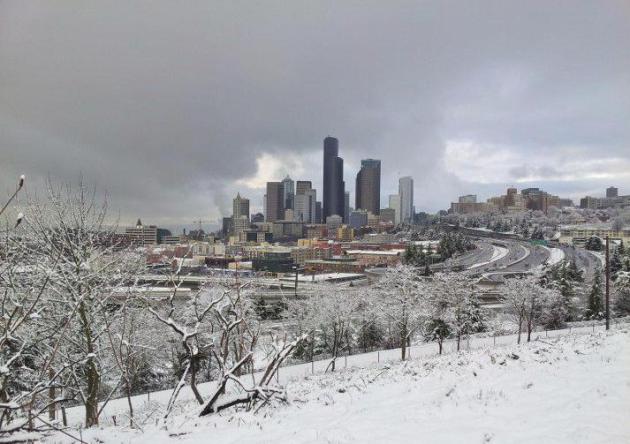
Graphic credit: "This example of a hurricane storm surge watch and warning map is based on a specific path of a slow-moving Category 2 hurricane. Note that part of the West Bank inside the post-Katrina hurricane levee system is in the warning area. Different paths by a Category 2 storm might produce different surge warning and watch areas, and a Category 3 or larger hurricane could result in the east bank area inside the levee system being included in a surge warning area." (National Hurricane Center)
Warming-Driven Heat Waves Could Tax U.S. Electrical Grid. Here's a snippet from Climate Central: "That
increased demand means electricity providers will need to increase
capacity to guard against spikes in usage, potentially requiring up to
$180 billion of additional grid investment, the study, detailed Monday
in the journal Proceedings of the National Academy of Sciences,
suggests. “The big implication of this study is that adaptation to
rising temperature . . . will be more expensive than what the existing
models tell us,” co-author Catie Hausman, an energy and environmental economist at the University of Michigan, said. That means that reducing greenhouse gas emissions
now to avoid those future costs is also a more valuable prospect. That
Earth’s rising temperature will lead to more intense and more frequent extreme heat events is one of the basic tenets of climate change..." (Graphic credit: Department of Energy).
Analysis of Record Rains and Flooding Across Louisiana in August, 2016. USGS has an overview of new research here; a 36 page PDF is here: "Heavy
rainfall occurred across Louisiana and southwestern Mississippi in
August 2016 as a result of a slow-moving area of low pressure and a high
amount of atmospheric moisture. The storm caused major flooding in the
southern portions of Louisiana including areas surrounding Baton Rouge
and Lafayette. Flooding occurred along the rivers such as the Amite,
Comite, Tangipahoa, Tickfaw, Vermilion, and Mermentau Rivers. Over 31
inches of rain was reported in the city of Watson, 20 miles northeast of
Baton Rouge, La., over the duration of the event. Streamflow-gaging
stations operated by the U.S. Geological Survey (USGS) recorded peak
streamflows of record at 10 locations, and 7 other locations experienced
peak streamflows ranking in the top five for the duration of the period
of record..."
Is Your Smart TV Spying On You? A story at The Washington Post made me do a double-take. Now, about that Vizio TV up at the cabin: "...According
to the lawsuit, Vizio was literally watching its watchers — capturing
“second-by-second information” about what people viewed on its smart
TVs. That included data from cable, broadband, set-top boxes,
over-the-air broadcasts, DVDs and streaming devices. Vizio also is
accused of linking demographic information to the data and selling the
data — including users' sex, age and income — to companies that do
targeted advertising. Vizio said in its statement that it never paired
viewing information with data that identified individual users but used
viewing data only in “the ‘aggregate’ to create summary reports
measuring viewing audiences or behaviors...”
1 out of 50 New U.S. Jobs Came From the Solar Industry in 2016. Greentech Media has details: "The number of jobs created to make, sell and install solar panels in the U.S. grew at a record pace last year, and grew much faster than the overall American economy, which is welcome news for the solar industry in the face of policy uncertainty. The new figures were issued on Tuesday morning, courtesy of a new report from The Solar Foundation. The report -- the seventh annual edition to come from the nonprofit -- found that there were 260,077 solar workers as of November 2016, which represents nearly 25 percent growth from the amount of solar jobs recorded the year prior. In comparison, jobs in the overall U.S. economy grew at a rate of 1.45 percent..."
2 Remarkable Facts that Illustrate Solar Power's Declining Cost. Dave Roberts reports at Vox: "...The
costs of climate change are left out of these LCOE calculations. If
they were included — if a reasonable carbon tax were applied across the
electricity sector — it would obviously advantage renewables relative to
fossil fuels. (It would also improve the position of existing nuclear
plants.) Conversely, a unique challenge facing wind and solar is also
left out. Wind and solar are intermittent resources (the wind isn’t
always blowing, etc.), which means the more of them you add to the grid,
the more “firming” of the grid you need to compensate. That can be done
through flexible backup generation (usually natural gas), energy
storage, “load shifting” (moving demand to times of high wind/sun), or a
variety of other techniques.
Making the grid more flexible will come at some cost. It has to be done
eventually, and the end product will be much more effective, but
getting there will cost money. Wind and solar necessitate spending that
money..."
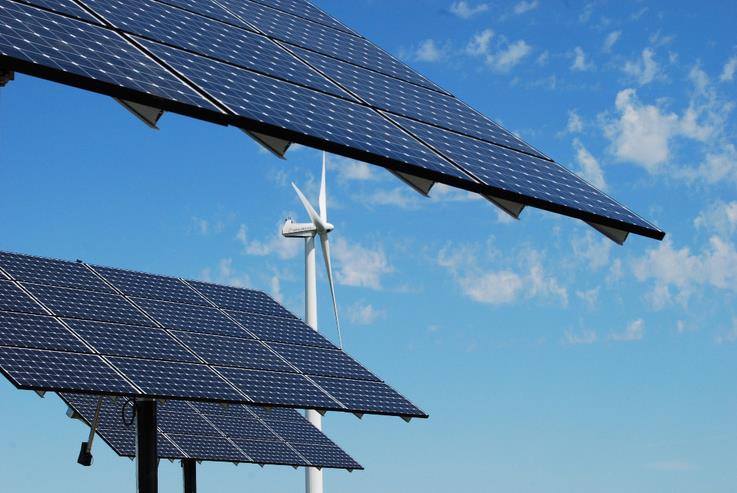
Our View: Work Together on Renewables Programs. Here's an excerpt of an Op-Ed from The Mankato Free Press: "...Critics say the move is an indication the GOP wants to kill renewable energy and the jobs it creates. But supporters, including a couple of key DFLers from northern Minnesota, say the program shouldn’t be run by a private company (Xcel) and say it is too costly for the amount of energy it’s produced and that the program lacks accountability. Indeed, a legislative auditor’s report said the program should have more accountability. It’s a stretch to say Republicans want to kill renewable energy. They know that renewable energy jobs have grown rapidly in the state and that continued growth of renewables is good for the economy, particularly in rural Minnesota..." (File photo: MN.gov).
Photo credit: Jay Calderon.
Image credit: "The Pilot translation kit comes from Waverly Labs and will be available from May."
People Who Drink Coffee May Live Longer. I knew there was a reason why I needed a small mortgage to pay my monthly Caribou tab. Here's an excerpt from Next Avenue: "For those of us who need a jolt of Joe to get the day started, who might sneak in a cup or two in the afternoon and have even been known to brew some dark roast late in the evening, it may be time to shed some of the guilt. Coffee could have a big upside. A Stanford University School of Medicine study in Nature Medicine last month is the latest to perk up the worried coffee drinker. It reported that caffeine consumption counters the chronic inflammation responsible for more than 90 percent of many cardiovascular and other age-related diseases such as cancer, Alzheimer’s and other dementias. Put more simply, coffee can slow down a widespread cause of human aging..." (Image credit: lefunny.net).
Photo credit: "Earthship sustainable architecture has been evolving since the 1970s." Jenny Parkins/CC BY-SA 2.0/Cropped
TODAY: Icy sun, feels like -10F. Winds: NW 7-12. High: 12
WEDNESDAY NIGHT: Partly cloudy - nippy. Low: 1
THURSDAY: Partly sunny. You may need a jacket. Winds: SW 5-10. High: 19
FRIDAY: Fading sun, milder breeze kicks in. Winds: SW 8-13. Wake-up: 16. High: 43
SATURDAY: Light rain, drizzle arrives PM hours. Winds: NE 5-10. Wake-up: 29. High: near 40
SUNDAY: Mostly cloudy, drying out. Winds: NW 8-13. Wake-up: 30. High: 38
MONDAY: Plenty of sun, feels like March. Winds: NW 5-10. Wake-up: 25. High: 42
TUESDAY: Intervals of sun, milder than average. Winds: NW 5-10. Wake-up: 23. High: 43
Climate Stories...
Image credit: "Abnormally warm air is expected to reach the North Pole by Thursday." Credit: Climate Reanalyzer
No Data Manipulation in 2015 Climate Study, Researchers Say.
There was no temperature "pause"; additional heat energy was absorbed
by ocean water, especially in the Pacific. Here's an excerpt at The New York Times: "...Dr. Hausfather was one of the authors of a review of the NOAA ocean data, which showed the most change. The paper,
published in January, compared the old and new NOAA data with
independent data from satellites, buoys and other sources and found that
the new data matched the independent data more closely. The result, he
wrote, “strongly suggests that NOAA got it right and that we have been
underestimating ocean warming in recent years.” In an interview
on Monday with E&E News, Dr. Bates appeared to distance himself
from some of what he wrote in the blog post, and from the way his
criticisms were portrayed in the Mail on Sunday article. “The issue here
is not an issue of tampering with data,” he said, “but rather really of
timing of a release of a paper that had not properly disclosed
everything it was...”
Graphic credit: CarbonBrief fact check. "Global
sea surface temperatures from the old NOAA record (ERSSTv3b), the new
NOAA record (ERSSTv4), and instrumentally homogenous records from buoys
and satellites. See Hausfather et al 2017 for details, as well as
comparisons with shorter Argo-based records."
Think Climate Change is a Hoax? Visit Norway. Here's an excerpt from Climate Home: "...One concern is that as the ice melts, historic claims from Russia, Canada and the US together with other Arctic nations on portions of the oil and mineral-rich ocean will cause friction. “In the mid- to far- term, as ice recedes and resource extraction technology improves, competition for economic advantage and a desire to exert influence over an area of increasing geostrategic importance could lead to increased tension,” reads the US strategy document. Another worry is that ice-free routes will see a surge in shipping. According to the UN’s IPCC climate science panel Arctic shipping lanes could be open for four months a year by 2050. There are already signs of an uptick in traffic..."
Photo credit: "Gyldenlove Glacier, Greenland." (Pic: NASA Goddard Space Flight Center)
Coastal Megacities vs. The Sea. The Center for Climate and Security has a link to a paper, highlighting risks to some of the world's most populated cities: "Cities are on the sharp end of a range of risks from criminal violence, terrorism and war to demographic pressures, to climate and environmental change. Coastal megacities are especially at risk given the specific impacts of climate change they face, including accelerated global sea-level rise, increased storm frequency and severity, and destruction to critical infrastructure such as port facilities, rail and road linkages, and energy installations, all of which are amplified as urban populations become ever larger. All these risks can lead to the loss of livelihoods as well as significant loss of life itself. Furthermore, the interaction of these risks could exceed the existing coping capacity of communities and governments and contribute to an increase in insecurity and possibly violent conflict." (Graphic credit: Climate Central).
Mail on Sunday Launches the First Salvo in the Latest War Against Climate Scientists. Dr. John Abraham at The University of St. Thomas has the story for The Guardian: "...The author of the recent attack piece, David Rose in the UK, has a history of denying the well-established science of climate change. He has a long history of making incorrect climate change statements. In the attack, Mr. Rose claims that scientists used misleading data in a recent (2015) paper that studied the rate of temperature change across the globe. He reportedly obtained information from someone who works at NOAA to imply that internal review procedures were not followed as the paper was prepared for publication. What Mr. Rose omitted however, is incredibly telling and he does a disservice to his readers. First, he neglects to mention that the work from the 2015 paper authored by Dr. Thomas Karl and others at NOAA has already been independently verified by other researchers. The second thing Rose neglects to mention is that his story’s source was never involved any part of the work..."
Article Names "Whistleblower" Who Told Congress NOAA Manipulated Data. Here's additional perspective from Ars Technica.
Photo credit: "Some of the 21 plaintiffs, along with attorneys and supporters, gather on the steps of the federal courthouse in Eugene, Oregon, after a hearing demanding the U.S. government take science-based action against climate change in March 2016." Robin Loznak/ZUMA PRESS.
What Future for Winter Tourism Under Global Warming? A few interesting nuggets in an interview at swissinfo.ch: "...Mild winters punish low and mid-altitude resorts, resulting in an inexorable decline in the number of skiers. To stay competitive, many resorts invest heavily in their ski lifts and artificial snowmaking. It is a strategy rejected by Clivaz, a professor at the Institute of Geography and Sustainability at the University of Lausanne, and co-author of the book "Winter Tourism: Climate Challenge". Christophe Clivaz: Climate models do show a gap in the arrival of snow at the beginning of the season. This trend will intensify in the future, although weather variations may be very different from year to year. These difficulties add to the rise in the snow-rain limit: since the 1960s, the zero-degree limit has risen by almost 300 metres in the Swiss Alps..."
Photo credit: "Christophe Clivaz says the massive investments needed to artificially make snow for the ski runs will only raise ski lift prices further." (Keystone)
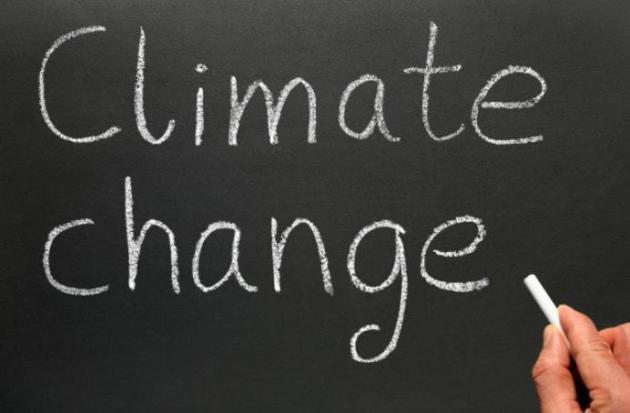
No comments:
Post a Comment